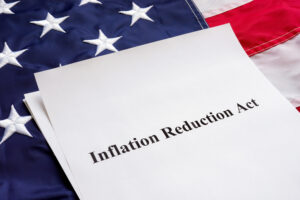Inflation Reduction Act Causing Inflation
The comments below are an edited and abridged synopsis of an article by Antonio Graceffo
An additional $700 billion in government spending tied to the Inflation Reduction Act will make inflation worse, not better.
The act is meant to curb inflation by laying out billions of dollars. This is contrary to economic logic, and even the Congressional Budget Office has said the act will not curb inflation.
The only solution for inflation is a reduction in government spending. One of the primary spending goals is to reduce carbon emissions by roughly 40% by 2030. Inflation is not tied to carbon emissions. If anything, increased environmental regulations will drive up prices and reduce jobs. Paying to reduce carbon emissions will just fuel more inflation.
The act includes tax cuts for electric vehicles and energy-efficient appliances. There is also a budget to retrofit affordable housing and make it more energy efficient. The connection between spending and a reduction of inflation is missing.
The act also intends to decrease the deficit not by curbing spending, but by raising taxes. A deficit occurs when the government spends more than it takes in. Increasing taxes will increase the amount of money the government can spend. Meanwhile, nearly half of these new taxes will be paid by manufacturers, creating disincentives to produce. Diminished industrial output will drive up the cost of goods and reduce the variety and quantity of goods available.
Beyond the manufacturing sector, the act increases taxes on businesses in general, which, combined with higher interest rates, will decrease new investment and hamper job creation. Ultimately, these costs will be passed on to customers.
While higher oil prices and continued supply chain issues exacerbate the situation, current inflation is largely due to the nearly $4 trillion the government spent on Covid. The American Rescue Plan alone consisted of $1.9 trillion, or 8.6% of GDP. As a result, inflation is now almost 9%, and the average worker’s real income has decreased by 5.6% since 2020.
Rate hikes along with governmental fiscal restraint would help cool off inflation. Increased interest rates reduce the money supply, which brings inflation to heel. Continued government spending increases the money supply and drives up prices, the perfect recipe for stagflation. Increased unemployment will reduce tax revenues and increase government transfer payments for social programs, which will lead to a greater deficit and a larger government debt.

